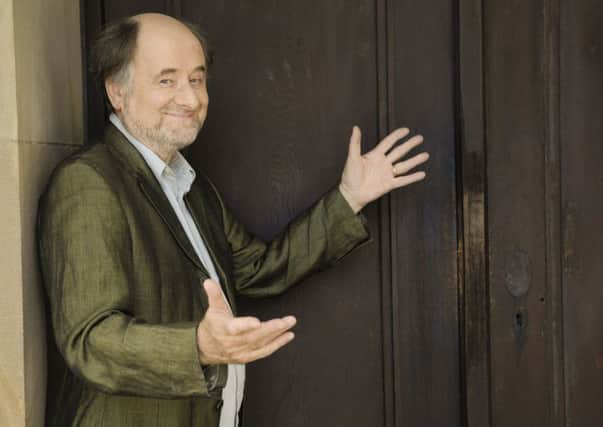Sir Roger’s ‘funny ideas’ give the RSNO a fresh look at Schumann


Veteran conductor Sir Roger Norrington, who turns 85 next month, tells that anecdote as an illustration of music’s ever-changing fads. “In 1840s Europe, Schumann was the top guy and his symphonies were all the rage,” he says. “He was very successful till Brahms came along, at which point his greatest symphony, the Second, just dropped completely out of concert guides.”
It’s only relatively recently that Schumann’s music has re-entered the repertoire with any real success. At the forefront of the revival is Norrington, whose open-minded authenticity and extrovert musicianship have refreshed our appreciation of a composer whose personal life was riven with mental anguish and self doubt, yet whose music, Norrington insists, is “joy, joy, joy.”
Advertisement
Hide AdAdvertisement
Hide AdHe will conduct the Third and Fourth Symphonies later this month, completing an enlightening Schumann series he began last season with the RSNO. Those used to his idiosyncratic approach will know he trims the orchestra down to a size befitting the style. The strings play with what he calls “pure tone”: that is, without vibrato.
The effect is totally transforming, giving a silver purity and focus to the string ensemble, but it’s not just a case of telling the strings to stop the “permanent wobbling.”
“You have to know what to put in the place of the vibrato,” he says, “much of which is to do with how they shape the phrases.”
Then there’s Schumann’s misleading tempo instructions. “He was a very bad conductor, and actually sacked in his last years from the orchestra he was conducting,” Norrington explains. “He just didn’t know what speeds to put down, so when he revised the Fourth Symphony, for instance, the metronome markings he made were totally different and completely daft.”
Next comes the issue of size. “Hardly anyone played Schumann when I was a student, but when they did, it was with a very big orchestra with large string section and only single wind. Something about that bothered me. I knew that Mendelssohn and Schumann both wrote for the Leipzig Gewandhaus, which at that time was a small room comparable to Edinburgh’s Queen’s Hall. Records show the orchestra with onl y eight violins in either section.”
Logic says that to double the strings to the level of today’s orchestras, you have to double the wind accordingly to have any hope of balancing anything. What you mustn’t do, argues Norrington, is confuse that ratio.
He’s thoroughly enjoyed taking the RSNO on its journey with Schumann, and Schubert before that. “When I first worked with them I thought the RSNO was a big heavyweight outfit used to lots of Russian conductors. But [former chief executive] Simon Woods told me ‘you’ll find them ready for your funny ideas’. He was right. They were extremely up for it.”
Advertisement
Hide AdAdvertisement
Hide AdMost orchestras find such changes of playing style very refreshing, he adds. “I was conducting the LPO last night. They’d just had a whole evening of Wagner’s Die Walküre and said ‘we’ve come for a detox, maestro’. I gave them Purcell and they felt all the better for it.”
But what about the audience? What does Norrington feel they should take away from his revisionist Schumann? He’s often said, for instance, that we shouldn’t think of Beethoven as early Wagner, more as late Haydn. Do we make the same mistake in understanding Schumann’s symphonies?
“What’s important is to recognise what composers like Schumann were trying to do with the symphony,” argues Norrington. “The intriguing thing about composers who came immediately after Beethoven is that they all looked the other way in embarrassment. They didn’t want to be like him at all.
“Where Beethoven and Haydn dealt with argument in their symphonies, Schubert, Mendelssohn and Schumann were painting pictures. The only guy who really got the Beethoven bug was Berlioz. Schumann dealt in musical landscapes, and his symphonies are beautiful for that. You just have to have the confidence to do what he wanted.” - Ken Walton
Sir Roger Norrington and the RSNO perform Schumann’s Third and Fourth Symphonies at the Usher Hall Edinburgh on 22 February, and at Glasgow Royal Concert Hall on 23 February, www.rsno.org.uk